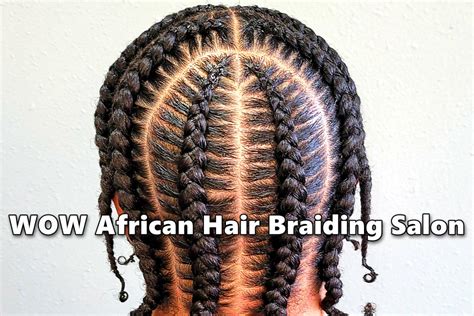**Introduction: Embracing the Ancient Art of Tree Braiding**
Tree braiding, an ancient practice rooted in indigenous cultures worldwide, has recently gained renewed popularity as a sustainable and artistic way to connect with nature. Using human hair, this technique creates intricate braids around tree branches, fostering a symbiotic relationship between humanity and the environment.

**The Benefits of Tree Braiding**
Tree braiding offers numerous benefits, including:
-
Enhanced Nature Appreciation: Engaging in this practice deepens our appreciation for the beauty and wisdom of trees, promoting a sense of awe and reverence.
-
Environmental Stewardship: By decorating trees with hair, we create a living art form that emphasizes the importance of preserving our natural heritage for future generations.
-
Personal Growth: The act of braiding and connecting with nature has therapeutic effects, fostering mindfulness, self-reflection, and a deeper sense of purpose.
**Materials and Techniques**
For tree braiding, human hair is the preferred material due to its natural affinity with trees. The process typically involves:
-
Hair Collection: Donated or shed hair is collected and cleaned, ensuring its cleanliness and suitability for braiding.
-
Braiding Techniques: Various braiding techniques can be used, including three-strand braids, French braids, and fishtail braids. The choice of technique depends on the desired effect and the length and texture of the hair.
-
Tree Selection: Trees with smooth bark and accessible branches are ideal for braiding. Native species that are culturally significant or have medicinal properties hold particular reverence.
**Creating Symbiotic Relationships**
Tree braiding establishes a unique connection between humanity and trees. The hair, a part of our physical selves, becomes intertwined with the tree’s branches, symbolically bridging the gap between the natural and human worlds.
-
Cultural Significance: Tree braiding holds cultural significance for many indigenous communities, representing a form of ancestor worship and a way to honor the spirits of the forest.
-
Ecological Impact: The hair used in tree braiding acts as a natural fertilizer, providing nutrients for the tree’s growth and health. It also shields branches from harsh weather conditions.
**Innovative Applications of Tree Braiding**
Beyond its traditional use, tree braiding has sparked innovative applications:
-
Tree Identification: By braiding hair in different colors or patterns, trees can be easily identified for scientific research or educational purposes.
-
Nature-Inspired Art: Tree braiding has inspired artists to create stunning and thought-provoking installations that explore the interconnectedness of nature and humanity.
-
Ecotherapy: The therapeutic benefits of tree braiding make it an effective tool for ecotherapy, helping individuals reconnect with themselves and the environment.
**Practical Considerations**
Before engaging in tree braiding, consider the following practicalities:
-
Safety: Ensure the tree is healthy and stable before attaching hair. Avoid braiding around branches that are too high or weak.
-
Materials: Use biodegradable hair and braiding materials to minimize environmental impact.
-
Regulations: Respect local regulations and obtain necessary permits if required.
**Effective Strategies**
To ensure successful tree braiding:
-
Plan: Choose a suitable tree and design your braid beforehand.
-
Gather: Collect enough hair and prepare the braiding tools necessary.
-
Secure: Use sturdy knots and fasteners to ensure the braid remains securely attached.
-
Maintain: Regularly check the braid and make adjustments as needed to ensure its integrity and health of the tree.
**Pros and Cons**
Pros:
- Connects humanity with nature
- Promotes environmental stewardship
- Offers therapeutic benefits
- Creates unique and beautiful art forms
Cons:
- May be time-consuming
- Requires some braiding skills
- May require permits or permissions in certain locations
Conclusion: Nurturing Nature and Self through Tree Braiding
Tree braiding is a transformative practice that strengthens our connection with nature and fosters a deeper appreciation for our environment. By embracing this ancient art, we not only beautify our surroundings but also cultivate a profound respect for the interconnectedness of all living beings.
**Additional Resources**
- The Art of Tree Braiding
- Tree Braiding: A Guide to Connecting with Nature
- Tree Braiding for Ecotherapy
**Tables**
Table 1: Benefits of Tree Braiding
| Benefit | Description |
|---|---|
| Enhanced Nature Appreciation | Deepens appreciation for trees and nature |
| Environmental Stewardship | Promotes preservation and protection of trees |
| Personal Growth | Fosters mindfulness, self-reflection, and purpose |
Table 2: Types of Braiding Techniques
| Technique | Description |
|---|---|
| Three-Strand Braid | Basic and versatile braid with three strands |
| French Braid | Intricate braid with strands woven over and under each other |
| Fishtail Braid | Unique braid that resembles a fish’s tail |
Table 3: Applications of Tree Braiding
| Application | Description |
|---|---|
| Tree Identification | Braiding hair in different colors or patterns for identification |
| Nature-Inspired Art | Creating installations that explore the interconnectedness of nature and humanity |
| Ecotherapy | Using tree braiding as a tool for connecting with nature and well-being |
Table 4: Effective Strategies for Tree Braiding
| Strategy | Description |
|---|---|
| Planning | Choosing a suitable tree and designing the braid |
| Gathering | Collecting enough hair and preparing braiding tools |
| Securing | Using sturdy knots and fasteners to attach the braid |
| Maintaining | Regularly checking and adjusting the braid for integrity and tree health |
